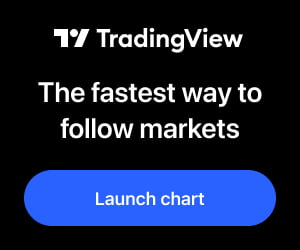

Crypto trading is like a rollercoaster: exciting, unpredictable, and sometimes stomach-churning. If you want to succeed in the risky and often volatile world of cryptocurrencies, you’ll need a combination of steely nerves, a solid strategy, and an easy-to-use trading platform. While finding the right platform and cultivating mental resilience are crucial, the most important factor is the type of trading strategy you employ.
With crypto’s rapid rise over the last decade, many traders and investors are drawn to the potential for massive gains. Some of the most popular crypto trading strategies include range trading, scalping, and arbitrage, but there are many more to explore. Let’s look into the top five trading strategies you need to know if you want to stay ahead in this competitive market.
1. Day Trading: Catching the Swings
Day trading is one of the most common and exciting strategies in the crypto world. As the name suggests, day traders buy and sell cryptocurrencies within the same day, aiming to profit from short-term price fluctuations.
How It Works:
Day traders usually track crypto markets very closely and rely on technical analysis, price charts, and indicators like moving averages or RSI (Relative Strength Index). Since crypto is incredibly volatile, prices can swing up or down dramatically within a 24-hour period, offering plenty of opportunities to trade.
Who Should Use It:
Day trading is perfect for those who have time to monitor the markets closely throughout the day and enjoy a fast-paced environment. However, it’s not for the faint-hearted—it requires quick decision-making, risk management, and nerves of steel!
2. Scalping: The Rapid-Fire Approach
Scalping is a trading strategy focused on making small, quick profits by buying and selling assets in very short time frames. Scalpers aim to “scalp” a small profit from each trade, usually holding positions for only a few minutes or seconds.
How It Works:
Scalping requires a high level of technical analysis and lightning-fast reaction times. Traders often make dozens or even hundreds of trades in a single day, capitalizing on minor price changes. The goal is to build up many small wins rather than seeking a big payday.
Who Should Use It:
Scalping is ideal for traders who thrive on fast-paced action and want to make frequent trades. It’s also best for those with a strong understanding of market trends and access to a high-speed trading platform.
3. Arbitrage: Exploiting Market Inefficiencies
Arbitrage is a more complex trading strategy that involves exploiting price differences between various exchanges. Since crypto prices can differ slightly between platforms, arbitrage traders buy a cryptocurrency on one exchange where the price is lower and sell it on another exchange where the price is higher.
How It Works:
This strategy requires traders to monitor multiple exchanges simultaneously. Arbitrage traders often use automated bots to make trades in milliseconds because the price differences are usually very small and don’t last long.
Who Should Use It:
Arbitrage is suitable for traders who are comfortable with technology and understand how to manage multiple accounts on different exchanges. While the profits can be small per trade, they can add up with enough volume and frequency.
4. Range Trading: Taking Advantage of Price Channels
Range trading is a popular strategy where traders identify predictable patterns in price movements and trade within a set price range. The idea is to buy when the price is near the support level (the lower end of the range) and sell when the price approaches the resistance level (the upper end of the range).
How It Works:
Range traders often use technical analysis tools to identify these support and resistance levels. Once they’ve pinpointed the range, they wait for the price to move between these two points. Since crypto prices often bounce within a defined range, this can be a very effective strategy during sideways markets.
Who Should Use It:
This strategy is ideal for traders who don’t want to make decisions based on short-term volatility. It’s best suited for those who prefer a more predictable trading environment and can wait patiently for prices to hit key levels.
5. HODLing: A Long-Term Bet on the Future
If you’re more of an investor than a trader, HODLing (a term that originated from a misspelled “hold”) might be your go-to strategy. HODLers believe in the long-term potential of certain cryptocurrencies and hold onto them through market ups and downs, hoping for massive gains over time.
How It Works:
The key to HODLing is selecting the right cryptocurrencies and holding them for months or even years, regardless of short-term price fluctuations. Investors who use this strategy often do extensive research into a project’s technology, team, and long-term potential.
Who Should Use It:
HODLing is great for individuals who believe in the long-term potential of blockchain technology and cryptocurrencies. It’s less about day-to-day trading and more about having faith in the overall upward trajectory of the market.
Conclusion: The Right CRYPTO TRADING Strategies for You
Whether you’re a beginner or an experienced trader, having a clear crypto trading strategy is key to navigating the often volatile world of cryptocurrencies. From the fast-paced environment of day trading and scalping to the patient, long-term approach of HODLing, there’s a strategy for every type of trader.
It’s important to experiment, research, and discover what fits best with your personal risk tolerance and schedule. While each strategy has its advantages, the common denominator is the need for discipline, patience, and the right tools.
In the ever-evolving crypto world, being adaptable and informed will keep you ahead of the curve.
FAQs
1. What is the best crypto trading strategy for beginners?
For beginners, range trading and HODLing are often easier to start with. Both strategies allow you to get a feel for the market without needing to monitor it constantly.
2. How do I choose the right strategy for crypto trading?
Choosing the right strategy depends on your risk tolerance, available time, and market understanding. If you’re comfortable with risk and have time, you might enjoy day crypto trading or scalping. If you prefer long-term investments, HODLing is a safer bet.
3. Can I use more than one crypto trading strategy?
Absolutely! Many traders use a combination of strategies depending on market conditions. For example, you might day trade during volatile markets and HODL during calmer periods. Diversifying your strategies can reduce risk and increase your chances of success.












